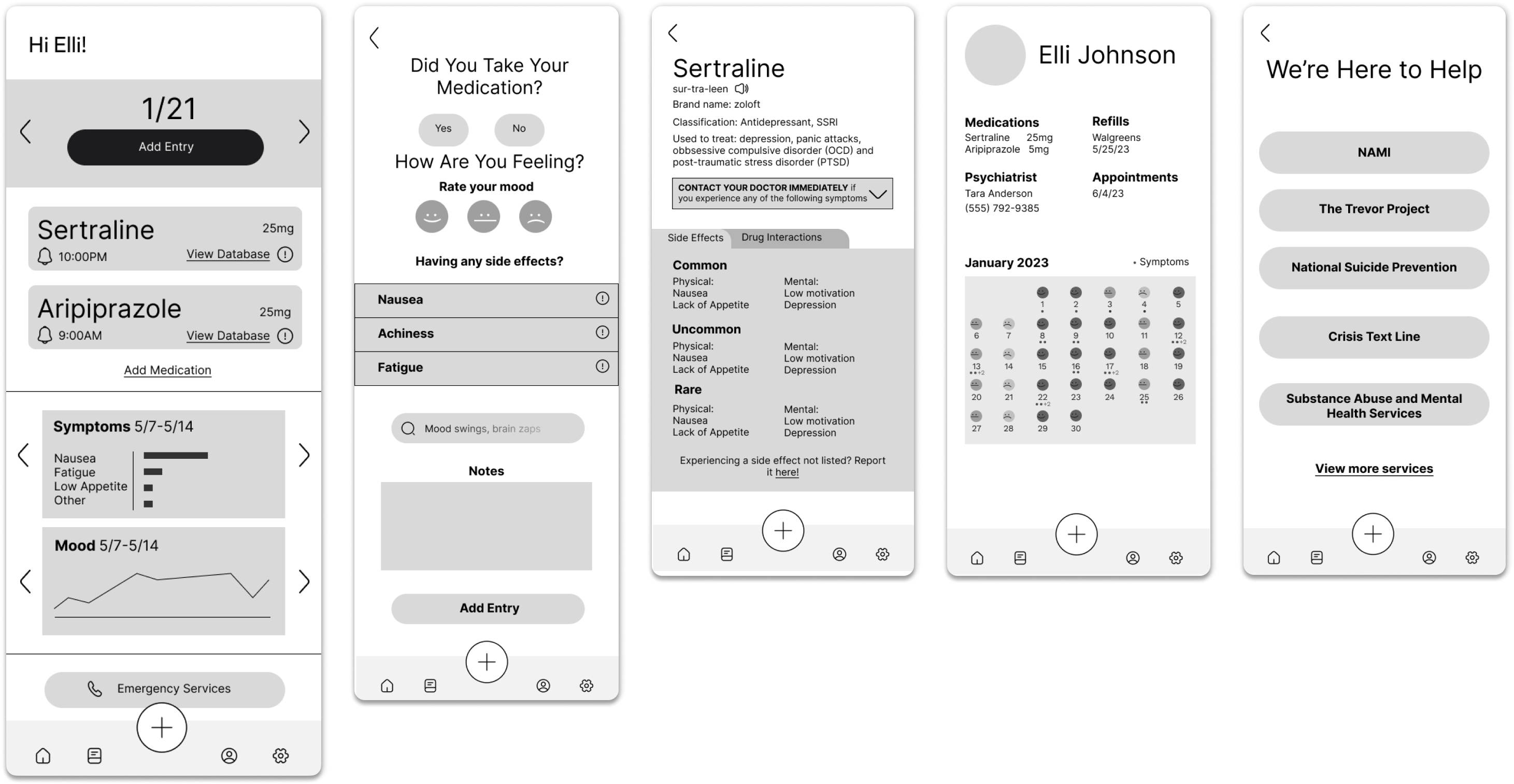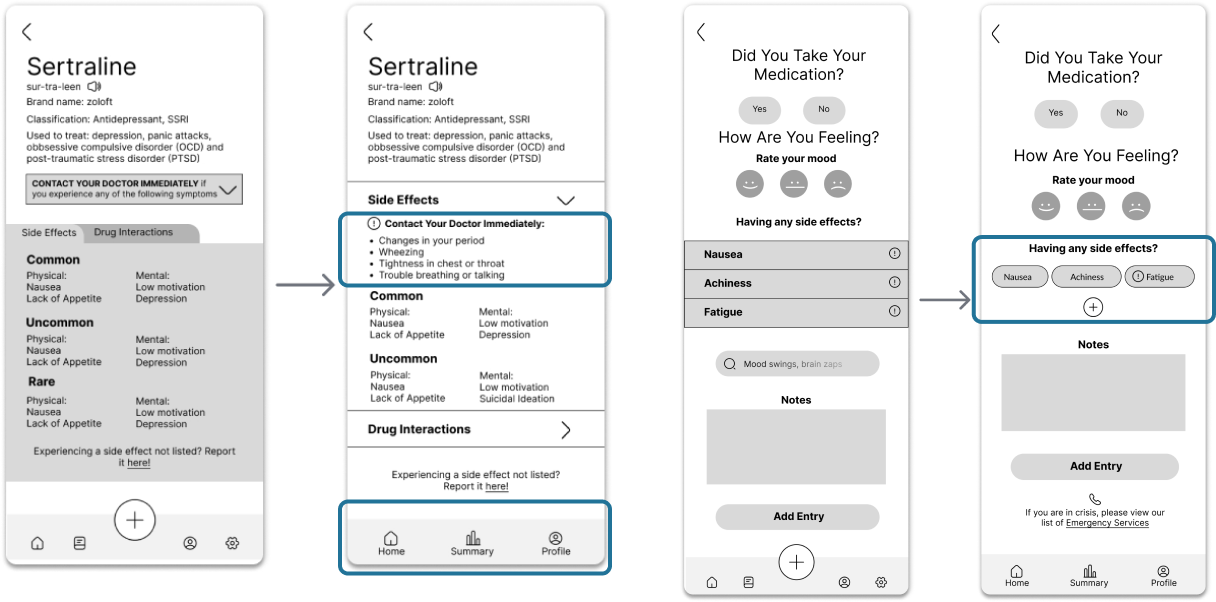Trying new psychiatric medications is often tedious. Patients must track their progress over several months since they require time to start working. In many cases patients need to try several medications before finding one that works well. Stigmatization has also led to a lot of misinformation about the usage of psychiatric medications, and many patients feel anxious about trying them.
Create an app that will allow patients to track their mood and side effects while trying new medications. Provide reliable access to key information about their medications such as drug interactions, common side effects, and dangerous symptoms to look out for.

Age: 23
Education: High School Degree
Hometown: Tampa
Family: Lives with her mom and 2 sisters
Occupation: Server
Kiara was diagnosed with Generalized Anxiety Disorder and has been recommended to a psychiatrist by her counselor. She is uncomfortable taking new medications and wants to research her options.
“I’m nervous about trying a new medication, but I don’t want to bring it up to my family and worry them or feel judged.”
Provide trustworthy resources to help her feel informed on what side effects she could expect
System to keep track of symptoms to easily report back to her psychiatrist. In case of emergency, have available contacts to help
A quick overview to help her know what is important to report to her psychiatrist
Based on user interviews, the patients’ primary concerns were about tracking their side effects and understanding the severity of their side effects. Having a built in database to easily reference this information in one place would help streamline the process and filter out potential misinformation.

The first round of wireframes were tested in a 15-30 minute moderated usability study with 5 users who had experienced taking psychiatric medications. The key findings were:

Navigational icons were not universally understood by all users, particularly the book icon intended to lead to past entries.
Search bar was not understood as a method to add newly experienced side effects.
While many medication tracker apps exist, psychiatric medications have a unique process that requires
a long trial process. It’s important for patients to monitor their symptoms over time in order to
accurately describe to their doctor how they are feeling.
In a culture that holds many negative or even false perceptions of psychiatric medication, I
believe having better resources tailored specifically to these patients will benefit them greatly.